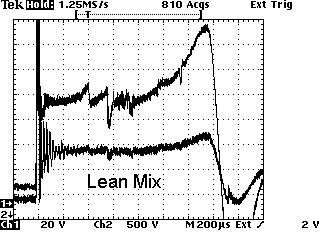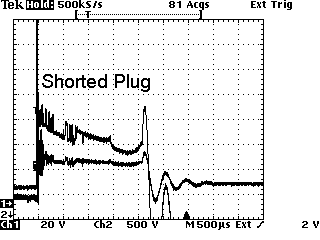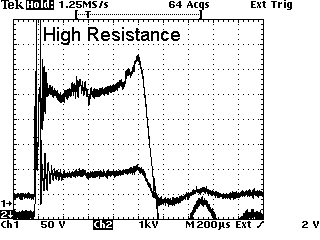
Spark Line Study
One great thing great about a labscope is it's ability to look deep into a signal. To demonstrate this, here are some close up's of a spark plug firing voltage's actual trip across it's electrodes.

Here is a typical spark line I have zoomed in on to show how a scope will go in close and really look at what's going on with the actual voltage jump across the plug gaps. When you get in this close you can't see the initial spike or the coil oscillations, etc., only the spark line itself. The top trace is secondary, bottom trace is primary. Typical spark burn time should be at least 1ms, average is 1.2- 1.5, beyond this is too long. Spark KV should be 1.5- 2.0KV. Anything outside these parameters indicate problems that are easily seen in the spark line itself. The two events in the line, (A), (B), is the spark blowing out and restarting as a result of chamber turbulence and is normal. The spark is out for 20us (twenty millionth of a second). This is from a healthy 94 Chev PU 5.7 V8 TBI at 49K miles.

Rich Mixture tends to create small vertical hash lines in the spark line.

Lean mixtures increase resistance across the plug gap, requiring more KV to keep the spark going.

Oil and fuel fouled, closed gap, shorted to ground, long burn time,

Open plug wire, worn out, wide gaps, bad plug, place high demand on the coil, shorten burn time, increase burn KV, high initial spike.